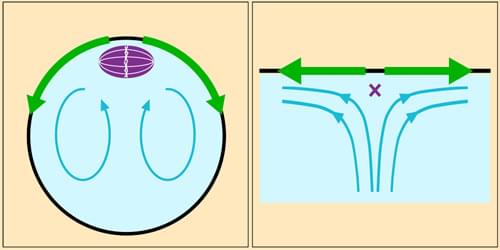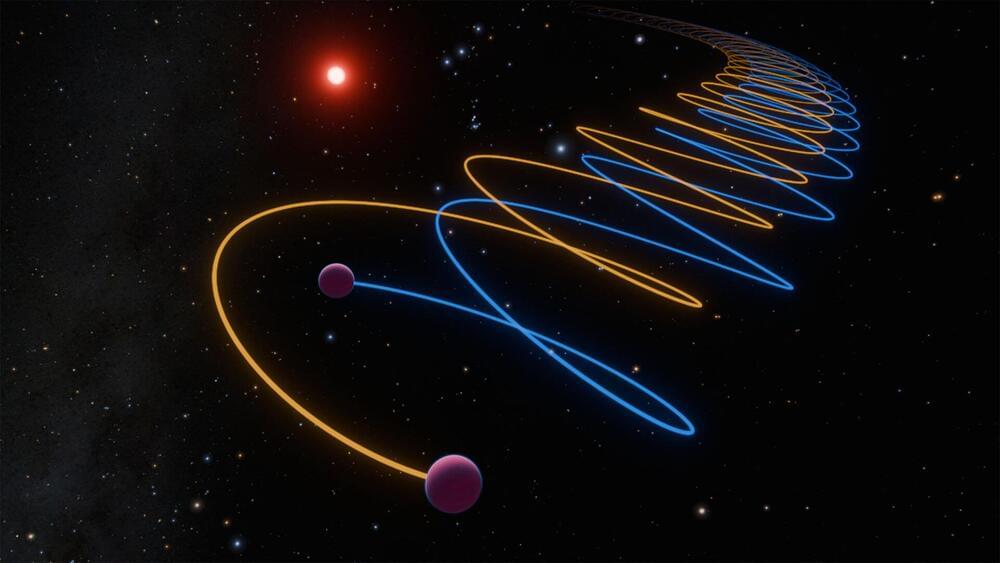Theorists have developed a model to explain how a protein structure keeps its position while being buffeted by currents.



Overlapping two 3D lattices with a relative twist opens the door to synthesizing crystals with diverse symmetries that showcase nontrivial band structures and novel properties.
When two identical periodic lattices overlap in space, with one twisted at an angle relative to the other, they form moiré lattices. The best-known examples are formed from stacked and rotated 2D sheets. These structures can possess fascinating properties not seen in their component layers. Twisted bilayer graphene, for example, can exhibit superconductor and Mott insulator behavior [1, 2]. Ce Wang of Tongji University in China and his colleagues now propose how to construct a 3D moiré lattice using two cubic optical lattices hosting ultracold atoms [3]. The researchers mathematically describe how two simple periodic structures, twisted relative to each other, can lead to 3D optical moiré patterns (Fig. 1). The result is a crystal-like structure with emergent properties that differ from those of the underlying simple lattices.





If it were up to Larry Ellison, the exorbitantly rich cofounder of software outfit Oracle, all of us will soon be smiling for the camera — constantly. Not for a cheery photograph, but to appease our super-invasive, if not totally omnipresent, algorithmic overseers.
As Business Insider reports, the tech centibillionaire glibly predicts that the wonders of AI will bring about a new paradigm of supercharged surveillance, guaranteeing that the proles — excuse us, “citizens” — all behave and stay in line.
“We’re going to have supervision,” Ellison said this week at an Oracle financial analysts meeting, per BI. “Every police officer is going to be supervised at all times, and if there’s a problem, AI will report that problem and report it to the appropriate person.”


Since pioneering the first corporate purchase agreements for renewable electricity over a decade ago, Google has played a pivotal role in accelerating clean energy solutions, including the next generation of advanced clean technologies.
Google’s first nuclear energy deal is a step toward helping the world decarbonize through investments in advanced clean energy technologies.
